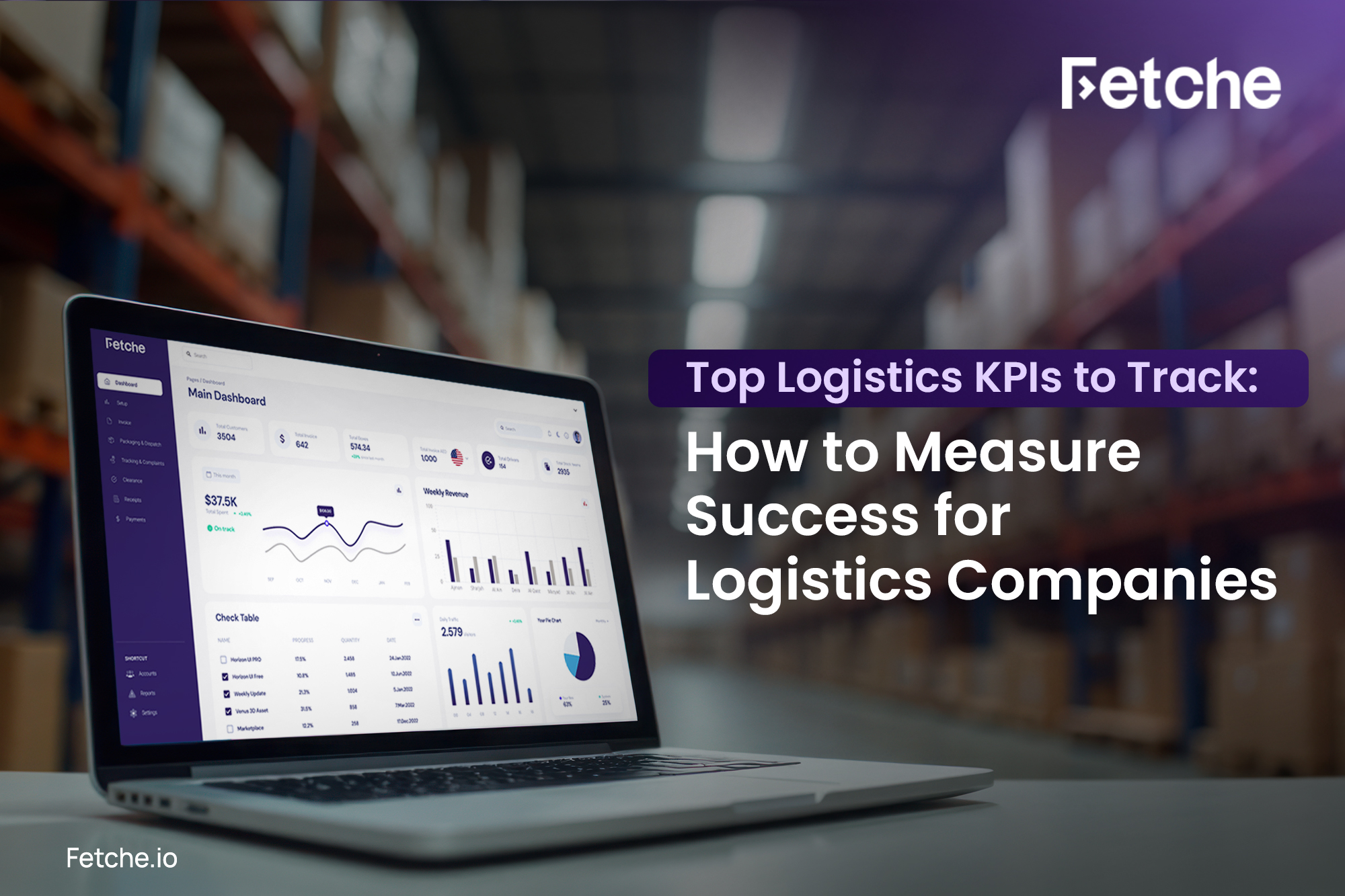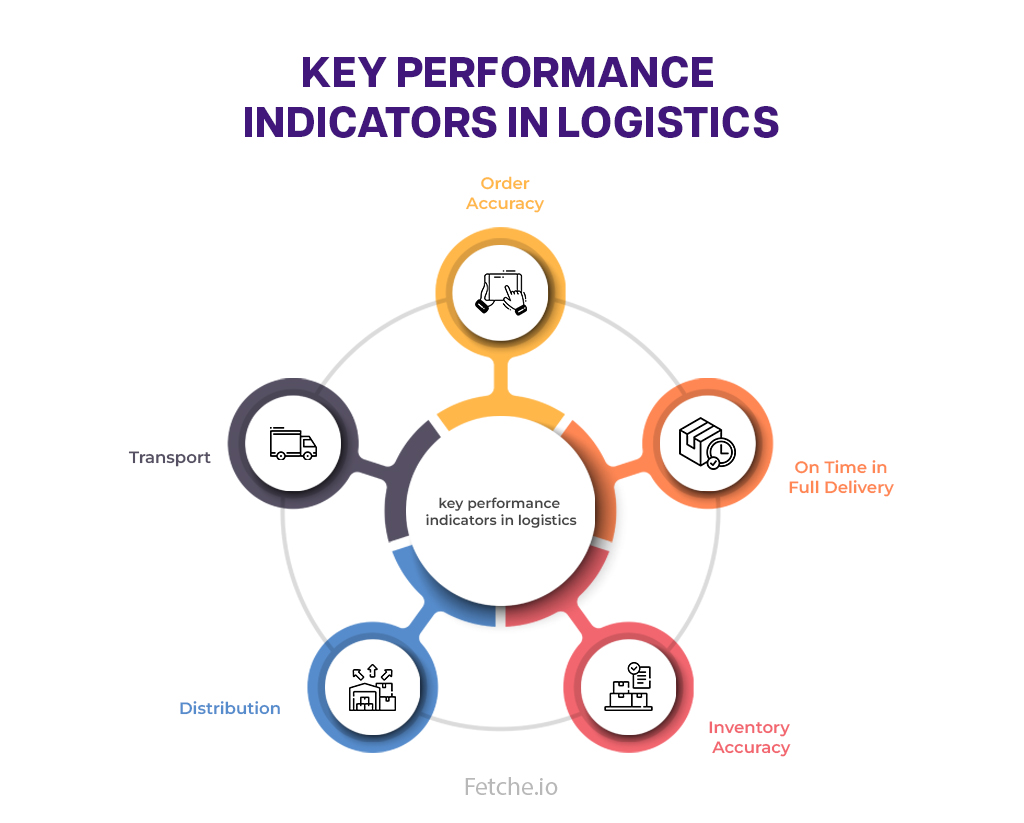
Ever have that feeling where no matter how much you labor, your competitors always seem to be one step ahead? You’re providing the same services, and your workers are working just as diligently—if not more—yet they appear to move forward faster, acquire more clients, and gain more credibility in the market. It’s infuriating, particularly when you’re attempting to run your logistics firm lean and mean, get the deliveries done on time, make the customers happy, and maximize profit to the max.
The truth is, diligent effort without precise direction is a recipe for burnout, not outcomes. In logistics, business isn’t always about efficacy. Without proper systems of logistics tracking metrics, it’s easy to forget what’s choking your operations. That’s where Key Performance Indicators (KPIs) step in.
To logistics operators, KPIs are not just numbers in a report. They’re informed indicators of how your business is actually performing, right from first-mile pickups to mid-mile haulage to last-mile delivery. They identify what’s working well, where your teams might need additional assistance, and which parts are holding back overall performance.
So what does the regular monitoring and comparing bring in? Well, to be precise, you get a clear picture of your whole supply chain. You can identify delays, manage increasing costs, enhance accuracy, and react more quickly to customer needs. Most importantly, you can throw away the guesswork and begin to make better-informed, fact-based decisions that can eventually drive growth. Above all, KPIs are more like a roadmap that will allow you to not only survive within a competitive environment but also to excel.
What Are Logistics KPIs?
Logistics KPIs (Key Performance Indicators) are measurable values that give logistics companies an idea of how well they are performing in some key areas. They can vary from delivery time and transport cost to order accuracy and warehouse efficiency. KPIs assist businesses in setting goals, monitoring progress, and responding to actions.
To explain in much simpler terms, they are pretty much like health checkups for your logistics business. Just as a physician tests your heartbeat, blood pressure, and sugar levels to confirm you’re healthy, KPIs test the health of your logistics process.
From initial mile delivery (getting the products from the supplier) to mid-mile delivery (transferring goods between warehouses) to the all-important last-mile delivery (getting it to the customer’s doorstep), each phase has critical KPIs that inform you whether everything is going according to plan or not.
Top Logistics Performance Indicators or KPIs to Monitor in 2025
Here is a list of some of the key performance indicators in logistics to measure:
- On-Time Delivery Rate (OTD)
This particular metric indicates how frequently deliveries arrive on time, over the time or ahead of the scheduled time. High OTD indicates your supply chain is trustworthy. If low, you may need to repair route planning, warehouse holdups, or transportation problems.
- Order Accuracy
This indicates the percentage of orders fulfilled with no errors. Incorrect items or quantities can destroy customer confidence. A high rate of order accuracy makes customers satisfied and lowers return expenses.
- Freight Cost per Unit
This metric gauges the cost of shipping one unit. Won’t it be nice to know if you’re overpaying? If that is in fact the case, you can totally work on it and lower the rates by streamlining packaging and routes or negotiating improved rates with carriers.
- Transportation Utilization Rate
Transportation Utilization Rate is the ratio of capacity utilized to capacity available during transportation. In other words, it indicates whether you’re making the most of your trucks or leaving valuable room and money behind. Low utilization typically reflects half-full trucks being hauled, which creates per-unit cost increases and wasted fuel. Tracking this KPI can lower transportation costs significantly and consolidate shipments.
- Inventory Turnover
This indicates how fast you replace and sell your stock. The higher the turnover, the faster your products are selling. The lower the turnover, the lower the sales, possibly indicating overstocking or slow sales and storage charges.
- Last Mile Delivery Success Rate
This indicates how frequently final deliveries are made without returns or delays. Because last-mile delivery is usually the most costly and customer-facing aspect of logistics, maintaining this rate high is important for reputation and cost management.
- Warehouse Picking Accuracy
This indicates how well items are picked in the warehouse. Mistakes here result in delivery errors, delays, and dissatisfied customers. Improved training, automation, or barcode scanning can improve this.
- Return Rate
This measures the number of products returned by customers. High return rates probably indicate product quality problems, bad packaging, or sometimes misaligned expectations. Avoiding returns by improving product quality tends to satisfy customers as well as save money.
- Average Delivery Time
This particular metric measures the time from when the order is placed until the delivery is done. What it does is help measure overall logistics performance and customer satisfaction.

How to Select the Most Suitable Logistics KPIs for Your Company?
Not every logistics KPI is necessarily equal and suited for every organization. Your preferred KPIs will depend on a set of very specific objectives, depending on whether or not you are trying to decrease costs, cut short delivery time, etc.
First, determine what your biggest pains are. Then choose 3–5 KPIs that align with those areas. For example, let’s say the last-mile delivery is taking a bit too long to analyze, and so you can pivot and simply focus on “Average Delivery Time” and “Last Mile Delivery Success Rate” instead. Anyway, make sure the KPIs are specific and measurable.
Also, engage your staff while establishing KPIs. If employees know what is being measured and for what purpose, they will be more likely to strive for improvement.
Common Errors to Steer Clear of When Logging Logistics KPIs
- Measuring logistics efficiency with too many KPIs simultaneously: More is not necessarily better. Measure a few essential metrics that actually make a difference.
- Utilizing unclear or imprecise KPIs: KPIs must be clear and quantifiable. “Improve delivery” is imprecise; “Boost on-time delivery rate by 10% within 3 months” is preferable.
- Failure to revise KPIs as the business matures: Your logistics objectives can evolve. Ensure your KPIs expand with your business demands.
- Disregarding employee feedback: Your workers have insight. Disregarding their suggestions can result in unrealistic or biased KPIs.
- Tracking only quick statistics: Don’t just watch weekly or monthly figures. Examine trends to gain a long-term perspective of performance.
- Not responding to KPI results: Tracking KPIs is meaningless if you do not act on the insights to improve.
How to Use Logistics Software to Monitor KPIs Effectively?
New logistics software can track KPIs in real-time, create reports, and flag areas for improvement. Such software gathers data from different places, such as GPS tracking devices, warehouse platforms, and delivery portals, and displays it in dashboards that you can grasp at a glance. Tools such as FarEye, Plecto, or InsightSoftware enable you to personalize dashboards according to your objectives. You can track everything from freight performance KPIs to logistics track metrics without dealing with spreadsheets.
How to Enhance Performance Based on KPI Insights?
After you begin monitoring key performance indicators for logistics, improvement comes next. Identify patterns—what is working, and what isn’t? Utilize this information to refine your strategies.
If consistently high delivery times, optimize routes or switch to a more consistent courier. If warehouse pick accuracy is low, invest in training or better tools. Above all, share insights on logistics performance metrics with your team. Let them see how their work is moving the company’s goals.
Conclusion: Turning Logistics KPIs Into Long-Term Success
Nowadays, merely working hard isn’t sufficient—you need to work intelligently to cross the threshold. By measuring logistics success through monitoring and responding to the correct logistics KPIs, you may be able to build a more efficient, agile, and profitable enterprise.
These freight performance KPIs give you an edge over competitors, enhance employee performance, and establish a reputation for dependability. From first-mile delivery to mid-mile delivery to last-mile delivery—each phase can be streamlined with the appropriate logistics company metrics.
